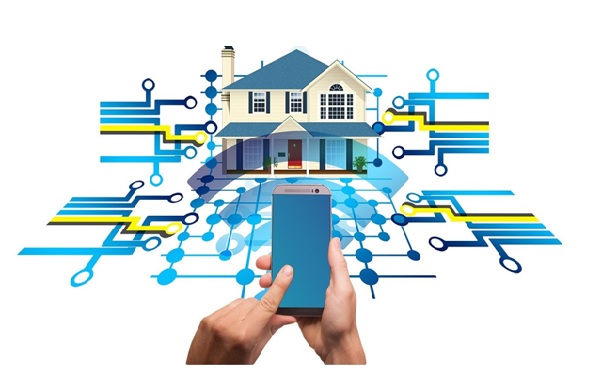Dump your dumb home security and go smart for 2020

A dumb security system doesn’t let you know when things are going wrong at home. It won’t capture pictures of burglars or show you who’s at your front door. And a dumb system definitely won’t let you tell burglars to ‘move-on’ through a microphone. Maybe it’s time to move up to smart security?
You probably have some kind of security system already. Possibly a monitored alarm system that alerts a security company; a system that isn’t monitored, so that you can drive the neighbours crazy with false alarms; or a tradition of using timer switches on lights and appliances, to make people think you’re really at home (how quaint!). These approaches to protecting your home, family and stuff are rapidly being replaced by smart security systems that use the internet of things to provide you with more information and a higher level of protection.
Smart basics – how it all fits together
Using your home’s wi-fi system, a smart security system lets you monitor and control a range of security devices using an app on your smartphone. A basic system will include door and window sensors, a motion detector and a control hub. At the next level, you get indoor surveillance cameras and a siren. And the crème de la crème of smart home security systems will have all of these things, plus smoke detectors, water sensors, light controls, garage door openers, outdoor surveillance cameras and the ability to work with Amazon Alexa.
DIY smart home security
If you’re handy when it comes to technology and home maintenance tasks, you’ll find it easy to install a basic smart security system. Just make sure you buy a system that’s designed for DIY. Also look for a kit that can take add-ons, so you can enhance your system as your appetite for smart home security increases. Most DIY systems are designed to alert you (the user) when a device is triggered. Depending on the reason for the trigger, it’s up to you to contact the necessary authorities.
PC Magazine has made selecting a DIY system easy with their best-of guide. Some of the systems covered by the guide offer monitoring as an add-on service. Top DIY picks include systems by SimpliSafe, Abode, Wyze and LifeShield.
Going pro with smart home security
For a system with bit more 007 cool about it, nothing beats a professional smart home security system. It’s the surest way to get all the bells and whistles – touch-screen hub, smart locks, glass break detectors, video door bells, carbon monoxide detectors and lashings of surveillance cameras. But make sure you read the fine print; some systems require a multi-year contract to stay affordable.
With a pro system, alerts are generally channelled to a monitoring company, who will then try to reach you. If you’re non-communicado, a guard is sent or emergency services are notified.
Teaming up with Amazon Alexa or Google Assistant
Most of the newest DIY and pro smart home security systems can integrate with Amazon Alexa or Google Assistant. This means you can use voice commands for security functions, in addition to voice control for smart-home functions such as heating, music, ventilation and window shades.
Do you just want a camera, so you can spy on your cat?
Sometimes the desire for a smart home security system is linked to the novelty of spying on your home when you’re not there, i.e. seeing what your cat/dog is doing? The upside of this is the ability to see intruders and give them a piece of your mind through an on-board speaker.
A standalone security camera installed in your kitchen/living area will let you see a lot of what’s happening in your home from your phone or laptop. Most cameras have built-in sensors that send you an email notification if sound or movement is detected. The sensitivity of this feature can be adjusted, if you have pets.
Smart locks eliminate the need for keys
Traditional lock companies like Yale and Schlage, have electronic door locks and deadbolts that allow access with a keypad. You’ll never need to cut another front door key and you can change the access code regularly, to keep your home secure. The only risk with these locks is a flat battery.
At the very least, get a video doorbell
The video doorbell is an invention that’s up there with sliced bread and automatic transmission. When a visitor rings the door bell, the camera captures and records them. At the same time, you receive a phone alert that someone is at your door. Even if you’re at the other end of town or on holiday in Europe, you can talk to the visitor through the speaker on the doorbell. Some models are battery-powered, so installation takes just minutes.
Read More News :
BIF refutes net neutrality concerns post Jio-Facebook deal
ADHD in Adults: Practical and Natural Remedies to Try at Home

.jpg)
.jpg)
